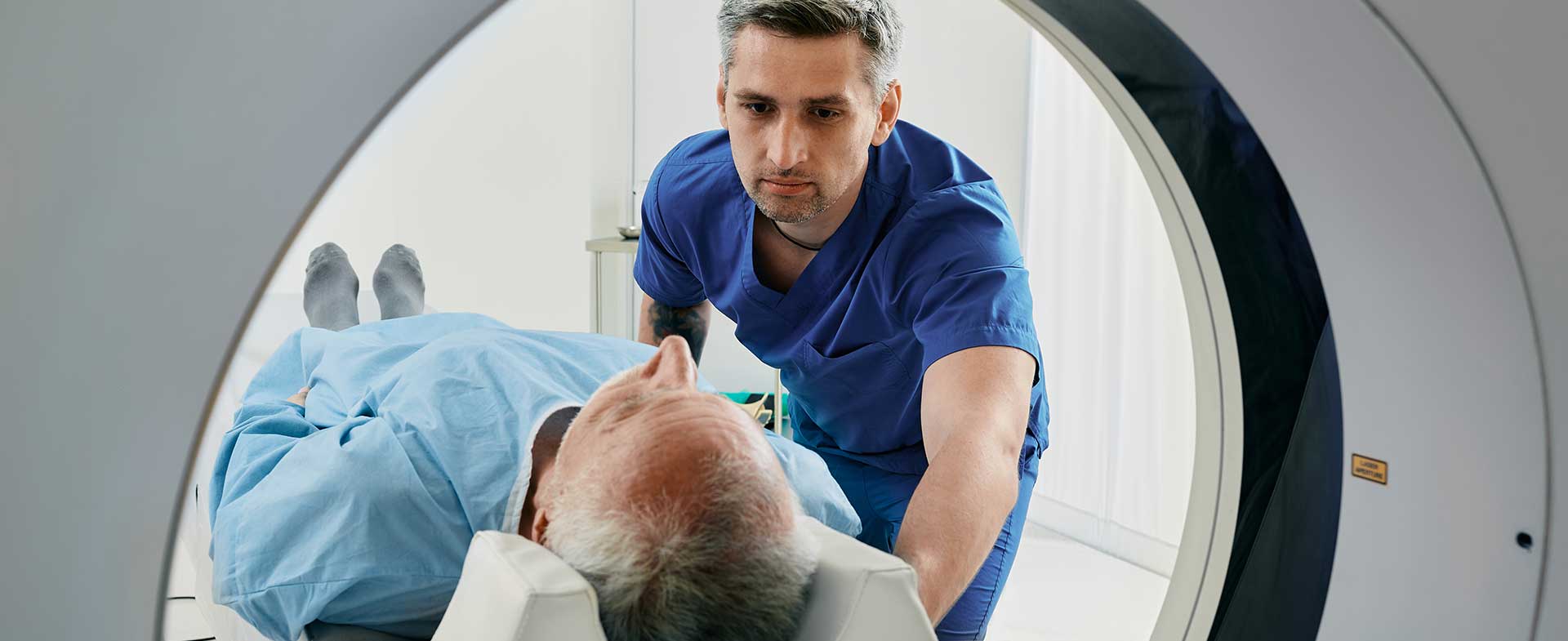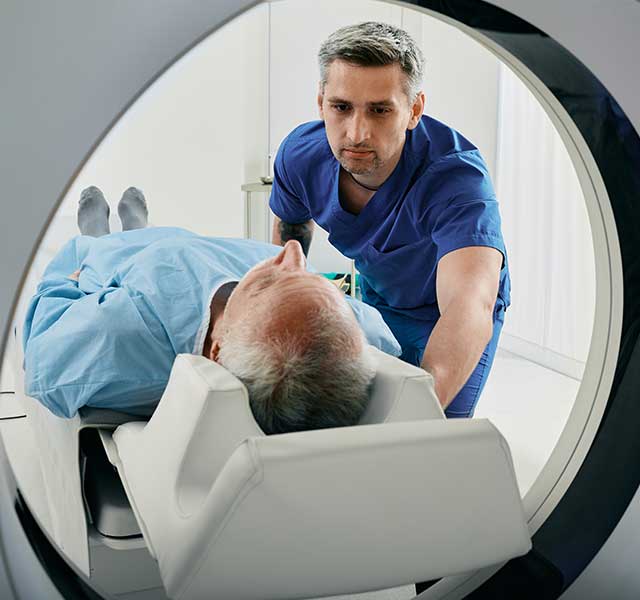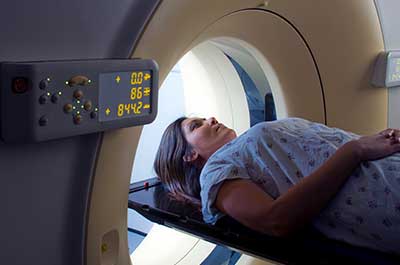A yearly lung cancer screening—which takes just a few seconds—saves lives. It consists of a low-dose CT scan, which uses the least amount of radiation needed to identify nodules in the lungs that could signify cancer. While some people are hesitant to get a scan because they don’t want radiation exposure, rest assured that a low-dose CT scan is just that—a very low dose of radiation.
"The amount of radiation in a low-dose CT scan is about the same as an average American receives in six months just from natural background radiation," says Samir Parikh, M.D., a radiologist at Henry Ford Health. "After all, radiation is all around us—in the Earth in radon, in cosmic radiation. You’re exposed to radiation if you go to Denver—a city that's 5,000 feet from sea level—or if you take a flight 35,000 feet in the air. The amount of radiation in a low-dose CT scan is small. It’s also significantly smaller than the amount of radiation in a routine CT scan."
If you are eligible for yearly lung cancer screenings, your risk of lung cancer greatly outweighs any harmful effects of low-dose radiation. To qualify for lung cancer screenings, you have to be at least age 50 and smoke a 20-pack-year, meaning you’ve smoked a pack of cigarettes a day for 20 years. (If you’ve quit, it must have been within 15 years.) About 80% of lung cancers are caused by smoking.

Lung Cancer Screening
“Yearly low-dose CT scans are so important for those who are eligible,” says Dr. Parikh. “The whole idea is to detect lung cancer early because it is a silent disease. By the time you’re experiencing symptoms, most of the time it’s too late. The earlier lung cancer is caught, the higher the survival rate.”
What To Expect During A Lung Cancer Screening
The scan itself takes less than five seconds, says Dr. Parikh. There’s no need to change your clothes—but if you’re wearing any accessories with metal, you’ll have to take them off. Other than that, you’ll simply lay down on a table and have the scan done. (There’s also no prep work involved, which is a big bonus.)
“I talk to patients right away after their scan, so they don’t have to wait for the results and they know what their next steps are,” says Dr. Parikh. “If I find a nodule that’s 6 to 8 millimeters long, we schedule follow-up appointments and more tests right then and there. If I find a nodule that’s less than three millimeters long, we schedule a follow-up appointment in six months to a year.”
Along with the low-dose CT scan, you must also begin counseling for smoking cessation—it’s hugely important to increasing lung cancer survival. “Among all of the cancers, lung cancer is the deadliest,” says Dr. Parikh. “Early detection through yearly low-dose CT scans and smoking cessation could change this.”
Reviewed by Samir Parikh, M.D., a radiologist who sees patients at Henry Ford Jackson Imaging Services.



